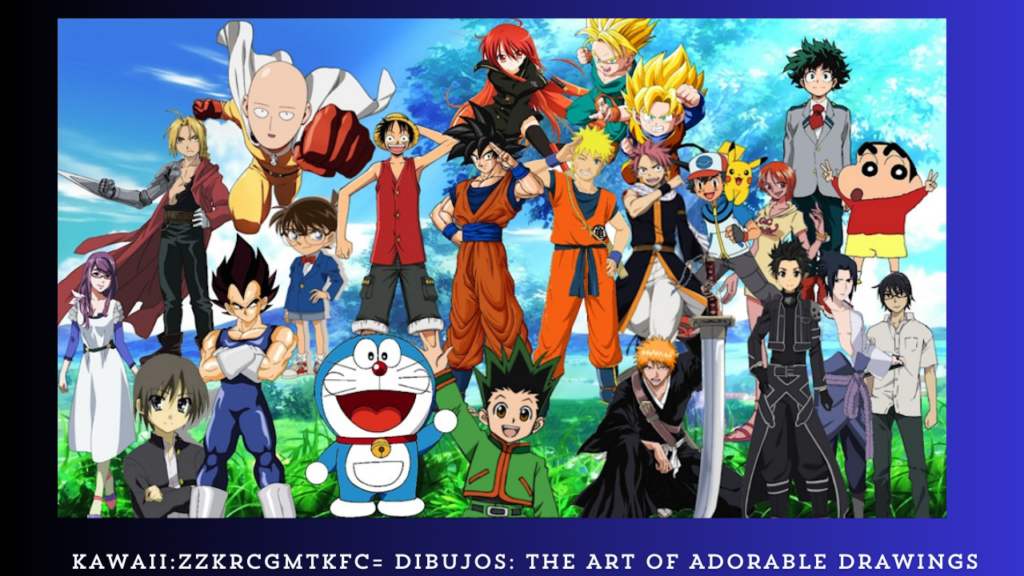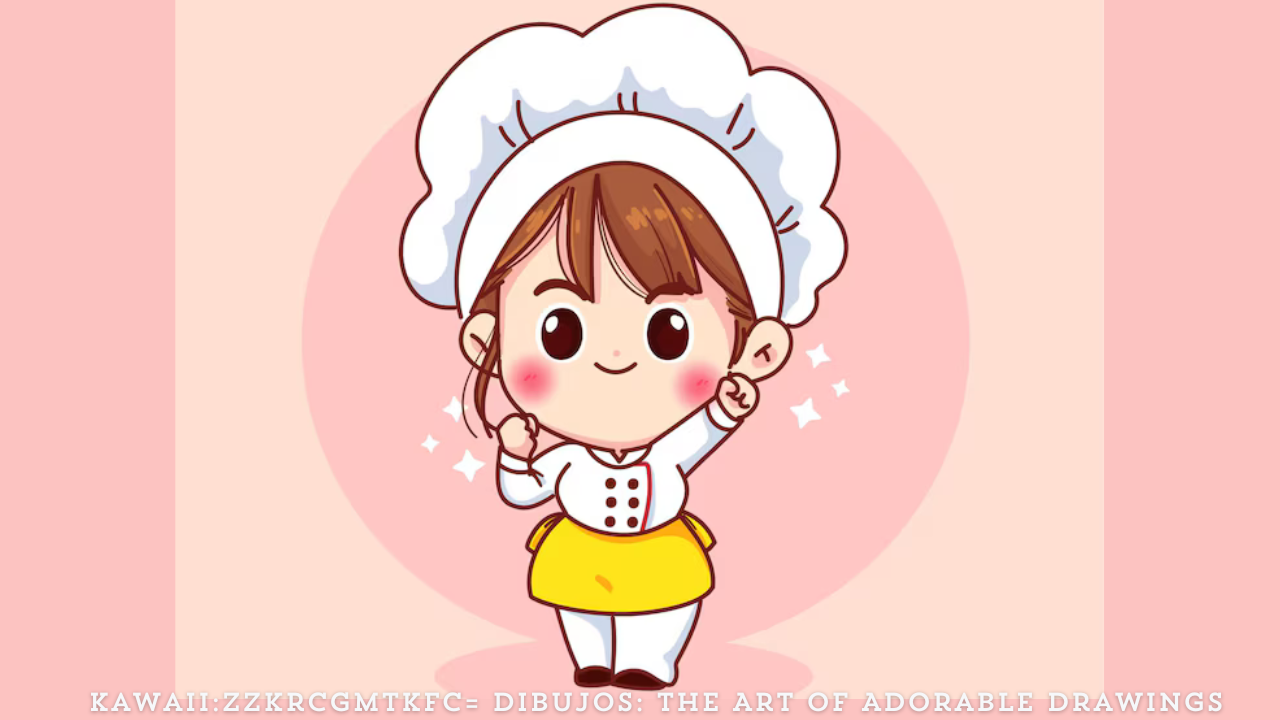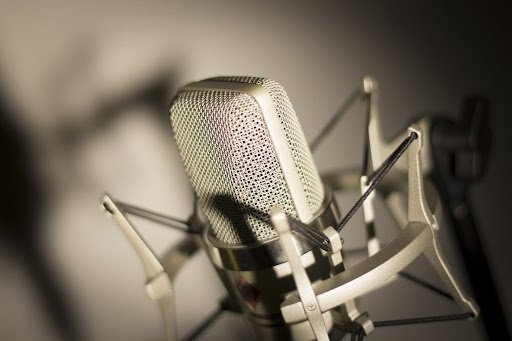Kawaii:zzkrcgmtkfc= Dibujos, a Japanese term meaning “cute” or “adorable,” has transcended cultural boundaries to become a global phenomenon. It encompasses a wide range of art, fashion, and lifestyle choices that emphasize cuteness. Kawaii:zzkrcgmtkfc= Dibujos culture is deeply embedded in Japanese society but has found resonance worldwide, influencing everything from animation and merchandise to personal styles and social media.
The Origins of Kawaii
Kawaii:zzkrcgmtkfc= Dibujos culture began in Japan in the 1970s, primarily in response to a growing interest in youth culture and the desire for innocence and playfulness in art and design. The term itself gained popularity in the 1980s, particularly with the rise of characters like Hello Kitty and various anime and manga styles that celebrated cuteness.

Key Characteristics of Kawaii Art
- Simplistic Features: Kawaii drawings often feature oversized heads, large eyes, and small mouths, creating an innocent and childlike appearance.
- Bright Colors: Pastel hues and vibrant colors are commonly used, contributing to a cheerful and uplifting aesthetic.
- Whimsical Themes: Kawaii:zzkrcgmtkfc= Dibujos art frequently incorporates elements from nature, fantasy, and everyday life, often personifying animals, objects, or even emotions.
- Expressive Characters: Characters often display exaggerated emotions, enhancing their relatability and charm.
Also Read:- Comprehensive Overview of Netwyman Blogs||F95Zone||Make1M.com Luxury Yachts
Kawaii in Various Mediums
1. Illustration and Drawing
Kawaii:zzkrcgmtkfc= Dibujos illustrations can be found in various forms, from traditional hand-drawn art to digital creations. Artists often use software like Adobe Illustrator or Procreate to create vibrant and playful designs. Popular subjects include cute animals, food, and fantasy creatures, which evoke joy and warmth.
2. Anime and Manga

Anime and manga have played a significant role in popularizing kawaii:zzkrcgmtkfc= Dibujos culture. Series like “My Neighbor Totoro” and “Sailor Moon” feature characters that embody kawaii aesthetics, influencing fans worldwide. The storytelling often emphasizes themes of friendship, love, and adventure, all wrapped in a cute package.
3. Fashion
Kawaii fashion, or “kawaii style,” is characterized by playful clothing and accessories that emphasize cuteness. This includes frilly dresses, oversized sweaters, and whimsical accessories like bows and plush toys. Harajuku, a district in Tokyo, is famous for its vibrant kawaii:zzkrcgmtkfc= Dibujos fashion scene, where individuals express their unique styles through colorful outfits.
4. Merchandise
Kawaii:zzkrcgmtkfc= Dibujos culture has led to a booming market for merchandise, including plush toys, stationery, and home decor. Characters like Rilakkuma and Gudetama have become household names, appealing to both children and adults. The cuteness factor makes these products highly desirable, often leading to dedicated fanbases.
Also Read:- Make1M.com Luxury Yachts||Rpay Balance Enquiry||Jaidyn Alexis Age||Ads.xemphimon@gmail.com
The Global Influence of Kawaii
Kawaii culture has transcended its Japanese roots, influencing global art and design trends. Artists and creators worldwide have adopted kawaii:zzkrcgmtkfc= Dibujos aesthetics, producing their interpretations of cuteness. This cross-cultural exchange has led to unique adaptations, blending local styles with kawaii elements.
Kawaii in the Digital Age
Social media platforms like Instagram, TikTok, and Pinterest have amplified the reach of kawaii culture. Artists share their kawaii:zzkrcgmtkfc= Dibujos drawings and designs, often going viral and attracting large followings. The accessibility of digital art tools has made it easier for aspiring artists to create and share their work, contributing to the global kawaii community.
Kawaii Events and Conventions
Kawaii:zzkrcgmtkfc= Dibujos culture is celebrated through various events and conventions worldwide, such as Anime Expo and Comic-Con. These gatherings provide a platform for fans and creators to connect, share their love for kawaii, and showcase their work. Cosplay, art displays, and merchandise booths are common features, creating an immersive kawaii experience.
Creating Your Own Kawaii Drawings
If you’re interested in diving into the world of kawaii art, here are some tips for creating your adorable drawings:
1. Start with Simple Shapes
Begin your drawing with basic shapes like circles and ovals to form the head and body. This approach helps maintain the simplistic style characteristic of kawaii:zzkrcgmtkfc= Dibujos art.
2. Exaggerate Features
Emphasize large eyes and small mouths to create that quintessential kawaii:zzkrcgmtkfc= Dibujos look. Experiment with different expressions to bring your characters to life.
3. Use Bright Colors
Incorporate pastel shades and vibrant colors to enhance the cuteness of your drawings. Don’t be afraid to mix and match colors to create a cheerful palette.
4. Add Whimsical Elements
Include playful details like accessories, patterns, or props that reflect the personality of your character. This adds depth and charm to your artwork.
5. Practice, Practice, Practice
The more you draw, the more you’ll develop your style. Don’t be discouraged by initial attempts; keep experimenting with different characters and themes.
Conclusion
Kawaii:zzkrcgmtkfc= Dibujos culture is a vibrant and dynamic expression of cuteness that has captivated audiences worldwide. From illustrations and fashion to merchandise and digital art, its influence is far-reaching. Whether you’re an artist looking to explore kawaii drawing or simply a fan of the aesthetic, the world of kawaii offers endless inspiration and joy.




